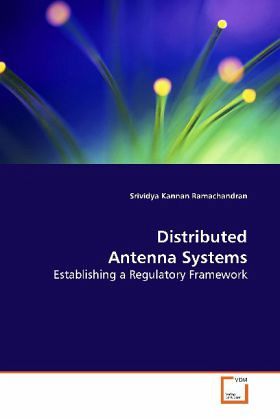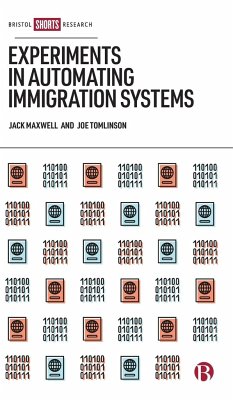
Distributed Antenna Systems
Establishing a Regulatory Framework
Versandkostenfrei!
Versandfertig in 6-10 Tagen
32,99 €
inkl. MwSt.

PAYBACK Punkte
16 °P sammeln!
Motivated by the growing commercial viability andwidespread use of Distributed Antenna Systems (DAS),this book analyzes regulatory classifications forwireless DAS deployments. It emphasizes that theexisting regulatory framework fails to satisfactorilyaccount for the diversity in practicalimplementations of DAS networks. This work exploresthree instances of problematic application ofconventional regulations upon unique DAS designs.First, the FCC should revisit its decision to imposea back up power rule on DAS antenna nodes at thefederal level, since DAS antennas differ fromtraditional cell site...
Motivated by the growing commercial viability and
widespread use of Distributed Antenna Systems (DAS),
this book analyzes regulatory classifications for
wireless DAS deployments. It emphasizes that the
existing regulatory framework fails to satisfactorily
account for the diversity in practical
implementations of DAS networks. This work explores
three instances of problematic application of
conventional regulations upon unique DAS designs.
First, the FCC should revisit its decision to impose
a back up power rule on DAS antenna nodes at the
federal level, since DAS antennas differ from
traditional cell sites with respect to limited
on-site processing and a smaller form factor. Second,
this work questions the wisdom of state regulations
that uniformly impose common carrier obligations upon
DAS providers. Third, this work also posits that the
current state of DAS-level municipal regulations is
fractured and suggests a unified regulatory approach
extended to all municipalities. This book will be
useful to both graduate students and practicing
industry professionals.
widespread use of Distributed Antenna Systems (DAS),
this book analyzes regulatory classifications for
wireless DAS deployments. It emphasizes that the
existing regulatory framework fails to satisfactorily
account for the diversity in practical
implementations of DAS networks. This work explores
three instances of problematic application of
conventional regulations upon unique DAS designs.
First, the FCC should revisit its decision to impose
a back up power rule on DAS antenna nodes at the
federal level, since DAS antennas differ from
traditional cell sites with respect to limited
on-site processing and a smaller form factor. Second,
this work questions the wisdom of state regulations
that uniformly impose common carrier obligations upon
DAS providers. Third, this work also posits that the
current state of DAS-level municipal regulations is
fractured and suggests a unified regulatory approach
extended to all municipalities. This book will be
useful to both graduate students and practicing
industry professionals.












